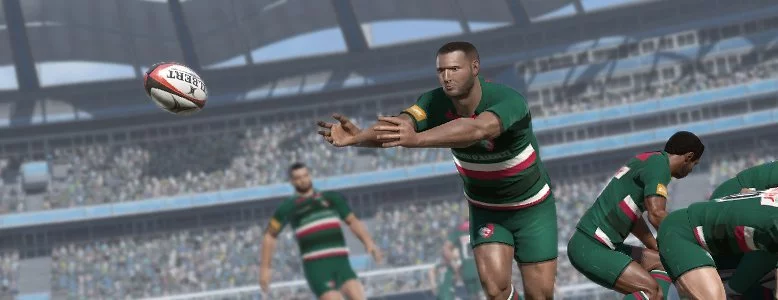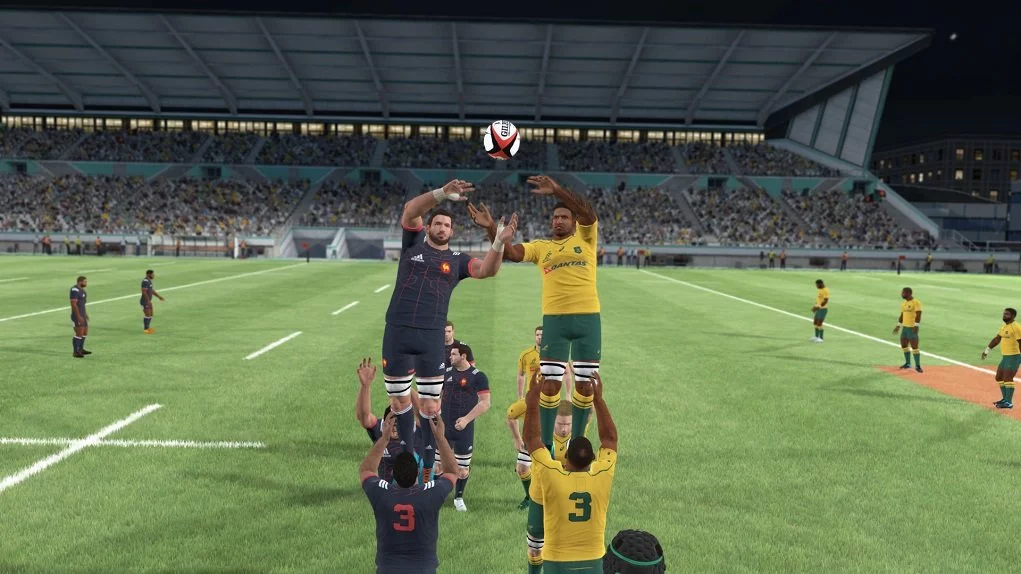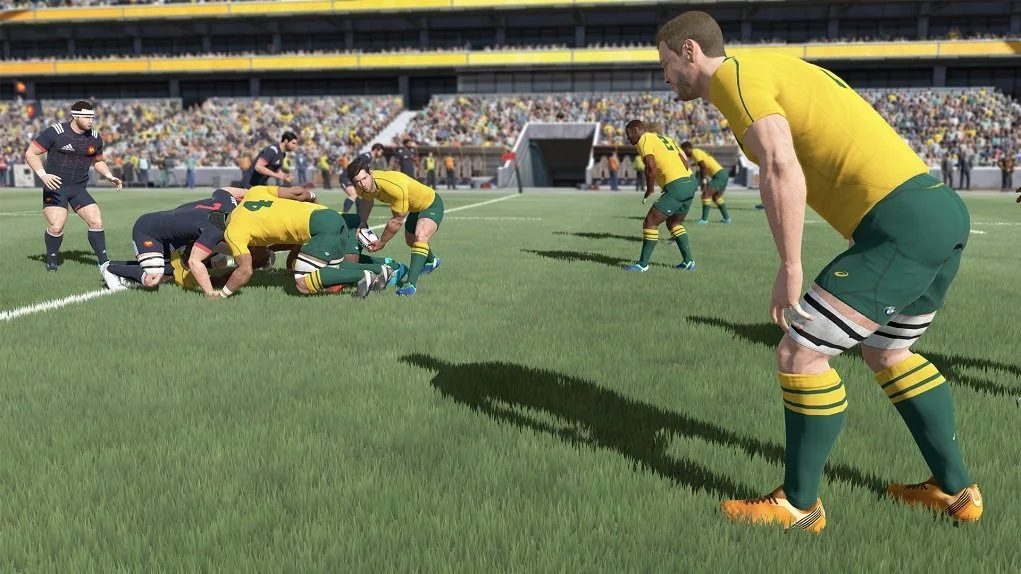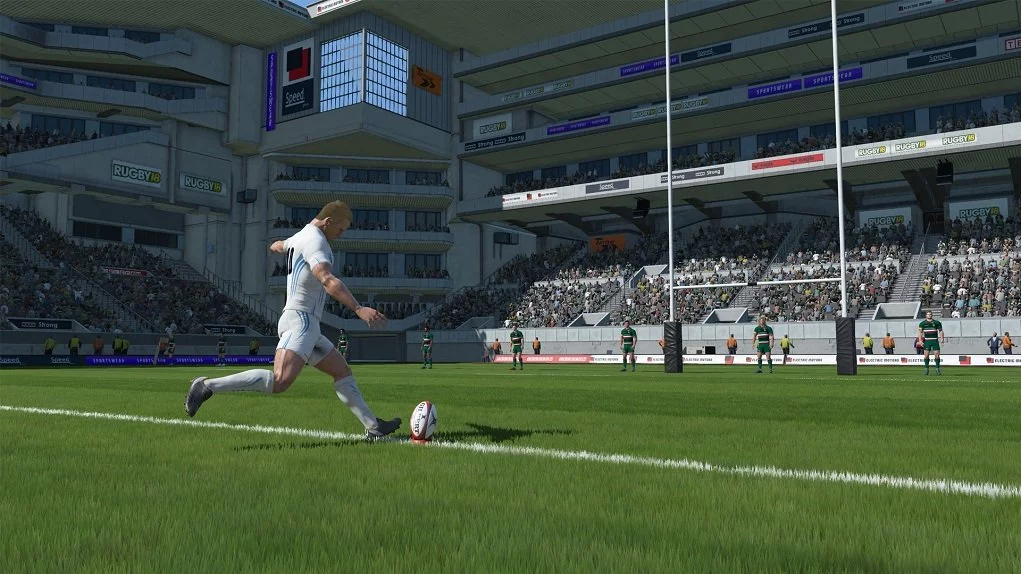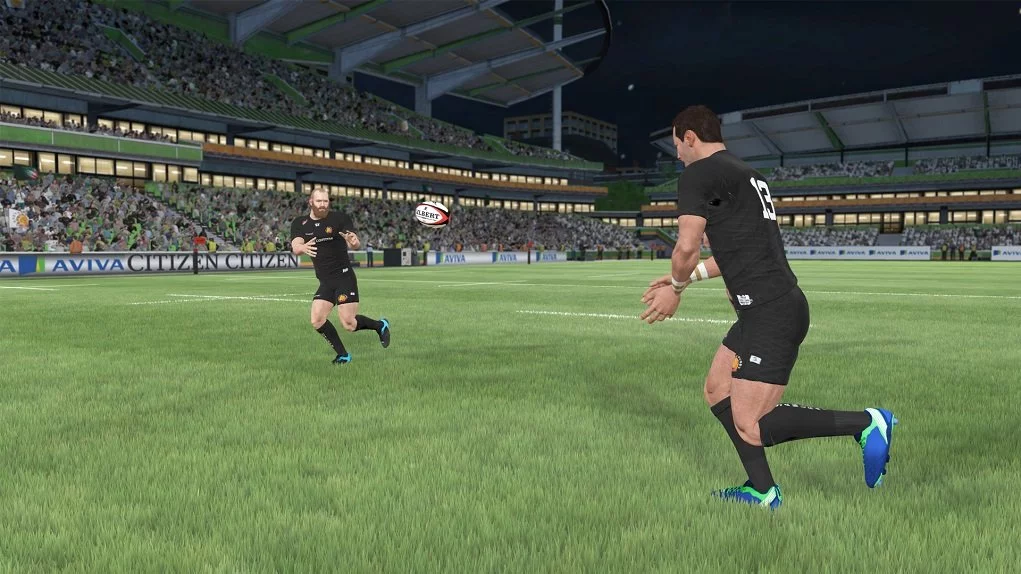Sigh. I had so many great “as bad as the Wallabies” puns lined up for this review, so many scathing attacks on the quality of our national team and the listless way they play heaven’s game, and what do they go and do? Beat the bloody All Blacks for the first time since tries were worth four points (that’s 1971 for you young-uns). So rather than making clever comparisons I’ll just have to tell you plainly: Rugby 18 ain’t so good.
Let’s get this out of the way early; Rugby 18 is Jonah Lomu Rugby compared to its predecessors Rugby 15 and Rugby World Cup 2015. Those two abominations are still in a class of their own for suckitude. In taking over the franchise name, French developer Eko Software hasn’t quite washed the mud off of it, but it has at least smeared it around in a pattern that kind of looks like Matt Dunning kicking a drop goal if you squint real hard.
Eko has built Rugby 18 from the ground up; rucks, tackling, passing, kicking, running, and — forgive me for copying this from my autotext buffer — but “each key aspect of the sport is crucially flawed in some way.” Rugby 18’s main crime is that it is a terrible replication of running rugby, starting with the running itself. From the knee deep molasses covering the field that leaves players with no acceleration, pedestrian top speeds and turning circles that make ocean liners look agile, taking the ball and running with it just isn’t much fun in Rugby 18. There is a series of theoretical evasive moves such as fends, steps and spins available, moves that are documented only as “try flicking the right stick around and experimenting.” I tried flicking the right stick every way a stick can be flicked and aside from a few well placed fends into thin air and the odd random spin I could find neither rhyme nor reason in these right-stick moves.
Your AI teammates never show much confidence in your passing abilities; you could throw a napkin over the entire backline at most rucks. While the d-pad can be used to shift them around somewhat, the time it takes for them to move and the strict time limit you have to clear the ball from the ruck before being penalised means you’ll rarely get the chance to throw anything but a short pass to a crashing flanker, prop or centre, whoever is there really. They have a nasty habit of angling right back into the ruck too, even when the AI defenders have left a generous gaping hole in their ruck defense that even these ocean liners could drive through had they not been intent on charging straight into the iceberg.
This makes both spreading the ball and running the ball difficult, but the complete breakdown of passing by both your own team and the AI makes replicating even basic, under 8s backline moves impossible. Passes are usually thrown to opposing players or to nobody, then sometimes when passes go directly to the intended receiver he just refuses to catch the ball. Luckily knock-ons are also mostly theoretical in Rugby 18, only very occasionally does play come back for a scrum, most of the time a very loose advantage is played.
The referee understands advantage like your racist uncle understands freedom of speech; it doesn’t mean what he thinks it does. You can knock the ball on, have the referee call advantage to the opposition, you win the ensuing ruck, run the ball two metres and have the referee call “advantage over”. That doesn’t match my traditional interpretation of the advantage rule, and penalties for offside are treated much the same way. The only sure way to get a penalty is to be victim of a dangerous tackle, or somehow be offside when taking a free kick.
Rugby may be a gentleman’s sport but the polite “no, you first” attitude of players who insist on entering the ruck one at a time is taking this elitism too far. You do get to enhance each players push when entering a ruck with a well timed flick of the stick, but jittering animations and the indirect, dawdling path each player takes to the ruck make earning that bonus harder than it should be, and until one man finishes his casual stroll into the ruck the next forward in line will not take a single step towards the ruck himself. This dawdling and poor pathfinding also ensures that keeping your pack behind you to drive up the field will still result in turnover ball, watching the AI push you off the ball while the prop you’ve commanded to join the ruck instead plays Duck, Duck, Goose with the fly half.
It appears that difficulty balancing in the ruck is done purely by how fast the AI lets your players join it. On lower difficulty and in early career mode games your team barrel into the ruck, jump up a division or two and suddenly they’re stuck watching butterflies instead of charging head first into the rear end of another man. The AI also “cheats” the ruck, as soon as you push a button to add another player, they miraculously know to add one too. This continues with box kicks, where the defenders will run to the place you are kicking before you’ve even picked the ball up to kick it. Most of the game systems are so exploitable I don’t blame the poor computer for taking whatever advantage it can get, but cheating as a difficulty slider hasn’t been acceptable since NBA Jam’s rubber band difficulty led to a dramatic spike in third party controller sales.
Mercifully, tackling is handled well. It sounds and feels meaty, the animations are good and it is reasonably responsive. The defensive game struggles in the open field but you’ll rarely see that so it isn’t a big deal that player switching slows down the newly selected player for a beat, rendering them useless in chasing a runaway player, or that the fullback runs the same direction as the attack like this was a rugby game from 1992, or that AI defenders on your own team just refuse to make tackles until you select them and do it yourself.
We have a legitimate winner in goalkicking, which is beautiful in its simplicity. You just move the stick in a direction, then add hook or slice to the kick as the kicker approaches the ball. You have no control over power, but I don’t find you need it, and hooking conversions against the wind or slicing to compensate for a shoddy initial aim was very satisfying. Every game is played in a swirling breeze, with a wind that changes direction at every kick, going by this and Rugby League Live 4 it appears the toughest thing to replicate in the modern rugby game is a consistent breeze.
The rest of the set plays, well, let’s be nice and say they aren’t terrible. I never lost a scrum in my entire time playing, though I did lose precious minutes of my life waiting for the “crouch, bind, hold” animations and playing the asinine follow the dot mini-game to win the scrummage. Your players wearing numbers 11-15 (I really can’t bring myself to call them a backline considering they act in no way like actual outside backs) are completely incapable of standing at any depth or width at scrums either so winning them won’t ever give you a chance to finally fling the ball around, but you can get some mighty box kicks away.
There is no game flow in Rugby 18. You quickly shy away from running and passing, so you make ground with kicks and waiting for the AI to give you the ball through mistakes. The AI attack is erratic and will eventually make those mistakes; throwing the ball around or just kicking a bomb for no real reason. There are endless numbers of intercepts, passes will hit the ground (and then you’ll accidentally kick the ball away instead of making a tackle) and if the AI does somehow find itself in open space, just like 1992 it will pass the ball with the line wide open in front of them.
I found a way to play Rugby 18 that was at least amusing enough to see me put the hours in to finish this review without storming into the Stevivor offices, grabbing our editor by the throat and demanding to know what I did to him to deserve yet another sh*te rugby game for review (um… casual threats of violence will do that. -Ed). That generally involved exploiting the AI to get field position through kicks and penalties, to then exploit its inability to defend the line consistently to score tries. If you push a maul over the goal line a try is automatically awarded, you don’t even need to put the ball down. AI defenders can’t tackle you within a few metres of the line without dragging you into the in goal, and there is no held up, no television match official (a removal I approve of, games can be perfect so why introduce failure or potential failure just to replicate a part of the game most fans hate anyway?) You don’t even need to score those tries, the AI will eventually get penalised for offside or a dangerous tackle, and if nothing else Rugby 18 is a brilliant Jonny Wilkinson simulator, you can kick a penalty goal from anywhere in your own half with ease.
What I never found was a way to have legitimate fun with Rugby 18. I had some close, gripping contests that had me invested, but it was investment in bullsh*t exploitation of AI and engine deficiencies, not in thrilling gameplay. You wouldn’t be able to clip 30 seconds of footage without showing some kind of failure, one ruck is all it would take to ruin it. It all comes back to not being able to spread the ball, not being able to engage in running rugby. I know the Northern Hemisphere doesn’t have a lot of experience with running rugby, but surely they’ve watched enough of the All Blacks by now to know in their hearts that it is both more entertaining and much more effective than kick, kick, kick, goal. It would certainly make for a better video game.
The English commentary in Rugby 18 is so disjointed, inaccurate and embarrassing to listen to that I ended up shifting the language to French, where at least I can’t tell if they’ve called the Wallabies France or told me that Toulouse are a big favourite and should do it easy against the All Blacks. Everything is so stilted, like an extra second was recorded after each name, number and team; it feels like better results could have come from feeding player names to Microsoft Sam. The game looks fine, graphically — it is hardly a world beater but it isn’t offensive, I can tell some of the players by their likeness and the animation is decent. There are no real stadiums replicated, just some facsimiles with creative names like Stadium 1 or my personal favourite, Stadium 8. The crowd wear team colours, sound pretty good and even do the wave, but give me a decent game of rugby in front of a giant black void over a realistically rendered and animated crowd cheering on this dross.
I can forgive Rugby 18 for not having every license in world rugby; it’s expensive, some are locked up by other franchises and frankly, some are just not worth paying for. What is less forgivable is ONLY including the teams you can get the licenses for. Hope you aren’t a fan of Ireland, Argentina, the United States or Super Rugby, you won’t even find cheap knockoffs full of vaguely similar player names in Rugby 18 — those teams just aren’t in the game at all. Best of all, with so few licenses beyond a handful of international squads and the English and French club competitions, the publisher has still decided to lock away the lucrative British and Irish Lions license as a pre-order bonus, a move only slightly above locking away the remaining international teams in random drop boxes you pay $1.99 to unlock on the scumbag scale.
Game modes are threadbare. Online play is included but I’d sooner live 18 June 1995 as Mike Catt than play a game this exploitable against the best the internet has to offer. There is a meta, Ultimate Team-style game mode, where you earn points for performance (or answering trivia questions) that allow you to eventually sign players to your fantasy squad. You are given such a pitiful number of points to start with that you can only fill your 23-man squad with the worst players ever to lace a boot, but luckily choosing to autofill your squad will sign the 23 worst props in rugby to your team, positions be damned. You can then take this team online to play other squads full of props that spend their weekdays holding stop-go signs in between Chiko Roll lunches.
Career play similarly uses micro-currency to restrict you; luckily after each division you are given the chance to draft your squad again and can eventually invest in at least some mediocre players. There is a loan market which doubles as a free agency, but despite loaning my own spare players out I never received anything for it. There is no international competition but you can beat up on minor French club sides as the Wallabies in career. Of course, that Wallabies squad is full of bottom ranked French props. There is a weekly challenge mode that was not enabled at time of review, but unless one of the challenges is “give the developer ample budget, time and direction to make a great rugby game, then wait until it is made” it isn’t going to improve your experience with Rugby 18 in any meaningful way.
There is some hope in Rugby 18. With a better (or actually any) passing and running game, and slight improvements to the ruck system, this would be a pretty decent rugby simulation. In a market where each new version of rugby union or rugby league games includes a whole new bunch of frustrating failures, it is nice to see legitimate improvement in a franchise, even if that improvement takes it from “worst game of the generation” to “worst sports game this year”.
Right now, there are just too many bugs, too many exploits, and just too little simulation of the best parts of the sport it tries to replicate for me to recommend Rugby 18. This is a solid base to build upon, but with so many great playgrounds out there playing on a solid concrete foundation with a few stray woodchips for safety just doesn’t have much appeal.
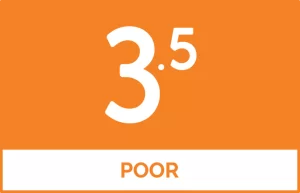 |
|
The good
|
The bad
|
Rugby 18 was reviewed using a promotional code on Xbox One, as provided by the publisher. Click here to learn more about Stevivor’s scoring scale.
This article may contain affiliate links, meaning we could earn a small commission if you click-through and make a purchase. Stevivor is an independent outlet and our journalism is in no way influenced by any advertiser or commercial initiative.























